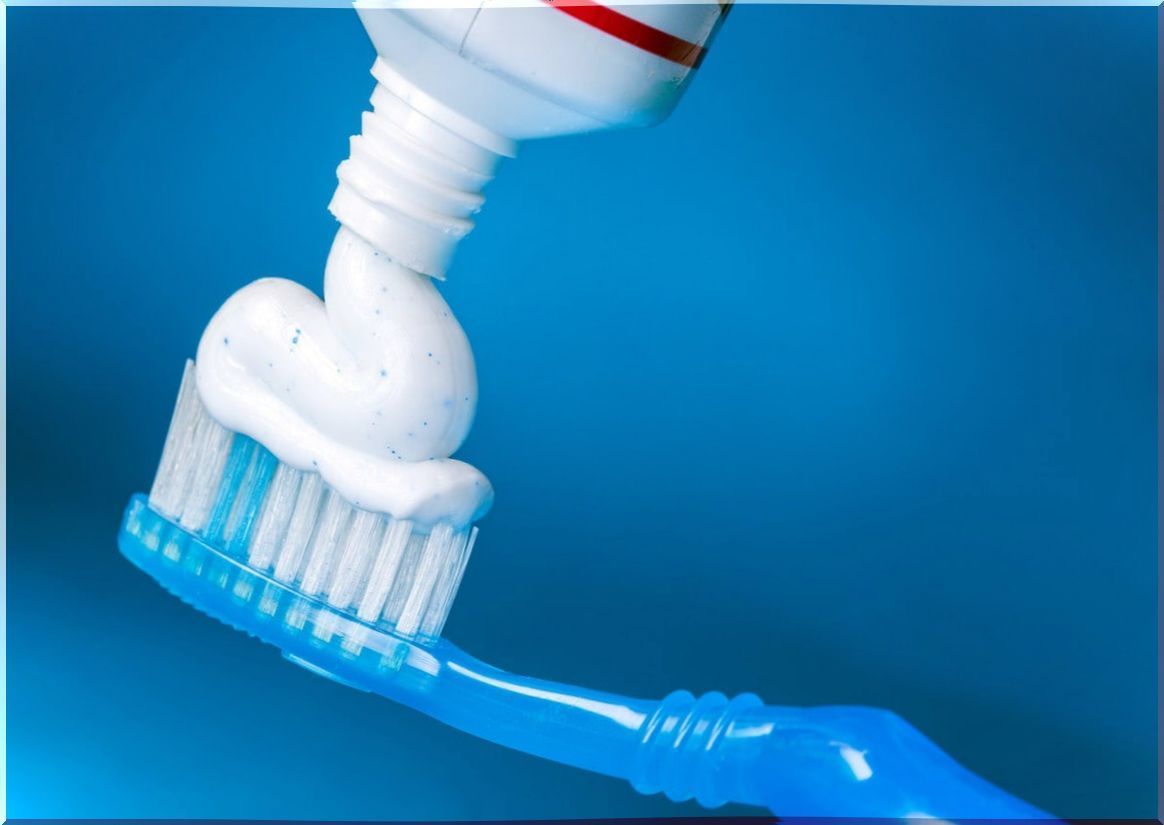Is Fluoride-free Toothpaste Good?
Fluoride-free toothpastes are presented as an alternative to help us reduce or moderate the excess of this element in the body. We tell you about them and their application today.

Despite what we are used to hearing and seeing in advertising, there is fluoride-free toothpaste. Is it a fashion or a trend? Does it have a scientific basis? Is the health of the teeth maintained using this type of toothpaste?
In this article we will tell you all about fluoride, what function it plays in the teeth of children and adults and how good it is that we can do without it for oral hygiene. Although there are shared opinions on this, we will try to be fair and know the vision from both sides.
What is fluoride and what does it do in teeth?
Fluorine is a chemical element that is part of the group of halogens, along with chlorine, bromine, iodine, astatine and tenese. It is naturally found in water sources: rivers, lakes and seas; even in plants and animals.
At normal temperatures it appears as a component gas of fluorides. It is released into the environment through natural processes such as weathering and volcanic emissions. But also through human action by combustion of coal, industrial waters, metal production (steel, aluminum) and phosphates.
Likewise, industrial activities related to refrigeration and aerosols (so-called fluorocarbons ) are an important source of fluoride emissions. The latter, however, has decreased, as it was considered the main cause of damage to the ozone layer.

Fluoride in the human body
In the human body it is associated with bones and teeth, showing high affinity with calcium. For this reason, fluoride is used in oral hygiene products as well as in drinking water for the same purpose, that is, with a view to strengthening tooth enamel and preventing cavities.
In this sense, the fluoride applied in the toothpaste protects against dental decay, providing the following benefits:
- It reduces or slows down the demineralization process, which is the first stage in the appearance of cavities.
- If the demineralization of a part has already begun, but cavities have not yet appeared, fluoride helps to remineralize.
- It also helps fight the formation of dental plaque, which is the cause not only of cavities, but also gum diseases, such as gingivitis.
Fluoride in the teeth of children and adults
Dental hygiene habits should be encouraged in children from before the appearance of the first tooth. About two years is when you start using toothpaste to brush.
In this regard, it is recommended to start with a fluoride-free toothpaste during the first three years, because children have a high propensity to swallow certain amounts of toothpaste. And while dentists insist that brushing should be done with fluoride, it is difficult to control that they do not swallow it.
Continuous intake of fluoride in children can lead to fluorosis. The effects of this condition are seen in the enamel, in which specks or spots appear. Or the teeth look discolored.
Now, in six-year-olds who use fluoride toothpaste, the amount to be applied on the brush should be little. The equivalent of a grain of rice is the practical measure. It should be remembered that the amount of toothpaste is not so important, but the frequency and brushing technique.
How much fluoride is healthy?
By way of prevention, you should look for products in which the concentration of fluoride is lower. In the European Union, toothpastes must contain a maximum of 1500 ppm (parts per million) of this element if it is for adults. For children it is recommended that it does not exceed 1000 ppm of fluoride.
The minimum fluoride intake, to be safe, should be below 4 milligrams / person / day in men and 3 milligrams / person / day in women. But it is difficult to know this, since people can consume fluoride from other sources: tea, meat, canned fish, salt, drinking water and bottled beverages.
Currently, in several countries of the world fluorides are included in water as an element to improve quality and taste. According to studies carried out in this regard, despite the standards demanded by government entities, there is not always a clear control of the levels.
Health effects of fluoride
In its natural state and in certain compounds, fluorine can be a toxic element for humans. In the chemical industry there have been accidents due to its handling, causing burns. Therefore, precautions are taken to avoid contact with the skin and mucous membranes or to inhale their vapors.
Apart from the aforementioned dental fluorosis, excessive consumption can cause various conditions in the body:
- Skeletal fluorosis : excessive accumulation of fluoride that can cause changes in the bone structure, causing the bones to become brittle and brittle.
- Osteoporosis : as well as damage to the muscular and nervous system and even the kidneys.
- Thyroid alteration : another risk pointed out in the various studies is that fluoride contributes to the decrease in iodine, affecting thyroid hormones.

Is it advisable to use fluoride-free toothpaste?
So far we can see that those who defend the use of fluoride emphasize its main benefit in the fight against cavities. In addition, they ensure that it is a natural element.
On the other hand, consumers who are concerned about the presence of chemicals in personal hygiene products have options. For example, fluoride-free toothpastes are presented as a natural alternative without the risks of this and other elements, such as triclosan.
In this sense, various brands are currently marketed on the market. Natural ingredients such as coconut oil and aloe vera are used in fluoride-free toothpastes. These products have natural fungicidal and bactericidal properties, which makes them a good option to replace toothpastes with fluoride.
Although the use of fluoride-free toothpastes is recent, there is research that proposes to question the need for fluoridation. Ethical questions related to the fact of deciding en masse on entire populations are argued.
Fluoride and its alternatives
No one doubts that fluoride has been a great ally in the fight against cavities. Under current conditions, it is also true that the presence of this element in the body has increased due to the consumption of other products that contain it.
The World Health Organization also warns about the problems that excess fluoride can cause. So the need to find a balance arises, both in children and adults.
The fluoride-free toothpastes are presented as an alternative, but it will be in a dental consultation in which they will clarify the complete doubts and, based on the state of the mouth, they will recommend one or another form of brushing.









